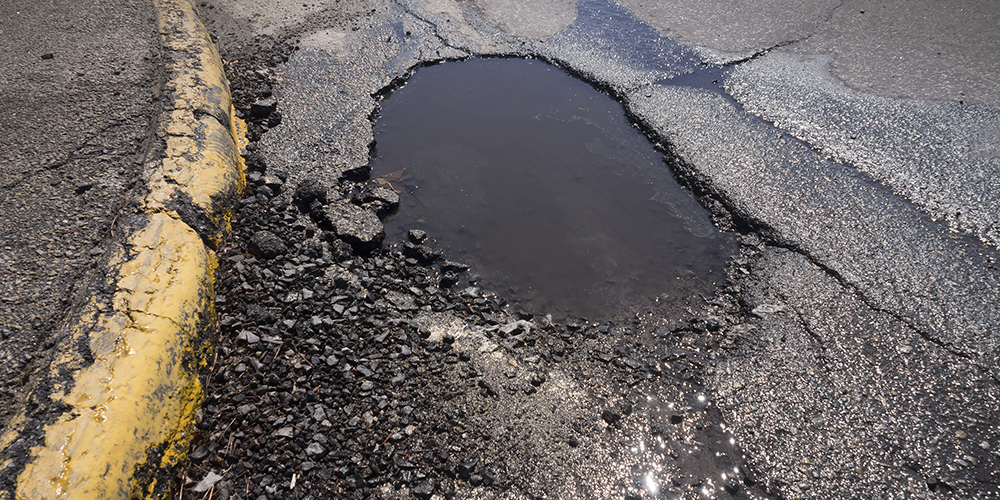AAA: Potholes Pack a Punch as Drivers Pay $26.5 Billion in Related Vehicle Repairs
New data shows 2021 was an expensive year for drivers who sustained vehicle damage from potholes

ORLANDO, Fla. (Mar. 1, 2022)—Americans battling the polar vortex will soon face a greater enemy—pothole season. A new survey from AAA found that last year 1 in 10 drivers sustained vehicle damage significant enough to warrant a repair after hitting a pothole. With an average price tag of almost $600 per repair, damage caused by potholes cost drivers a staggering $26.5 billion in 2021 alone.
To make matters worse, these same drivers often ended up with an average of two pothole-related repairs signaling that America’s roadways need immediate attention. As states receive an influx of funds from the Infrastructure Investment and Jobs Act, AAA urges government officials and departments of transportation to focus on improving road conditions, prioritizing those areas most in need of repair.
“In many parts of the country, winter roads will likely give way to pothole-laden obstacle courses,” said Greg Brannon, AAA’s director of automotive engineering. “When a vehicle hits a pothole with any kind of force, the tires, wheels and suspension get the brunt of the impact and fixing any of those items is pricey.”
The Pothole’s Origin Story
Cracked and crumbling pavement is the perfect environment for potholes to form. Moisture collects in these crevices and as temperatures fluctuate, it expands and contracts due to freezing and thawing. This breaks up the pavement and, combined with the weight of passing cars, eventually results in a pothole. These concrete craters can wreak havoc on a vehicle’s tires, alignment, suspension and shocks. In the winter and spring of 2021, AAA responded to 1.8 million tire-related roadside assistance calls. While AAA does not identify if a roadside assistance request is the result of pothole damage, this number represented 11% of the total calls received in the winter and spring last year.
How to Save Your Car and Your Wallet from Pothole Damage
While potholes are a reality for many drivers, sustaining vehicle damage does not have to be. AAA recommends the following:
- Check Your Tires, which includes tread depth, tire pressure, suspension and alignment
- Tread depth—insert a quarter into the tread groove with Washington’s head upside down. If you can see the top of Washington’s head, start shopping for new tires.
- Tire pressure—check this at least once a month using a quality gauge. Do so before driving when tires have been at rest and are not hot. Follow the vehicle manufacturer’s recommended inflation pressure found on a sticker inside the driver’s side door.
- Suspension and Alignment—look for changes in vehicle handling, excessive vibration or uneven wearing of tires, all indications of a problem with the suspension like alignment or shocks. If your vehicle pulls to the left or right, have the wheel alignment checked by a trusted mechanic.
- Keep Your Eyes on the Road, an alert and cautious driver is less likely to hit a pothole
- Scan the road ahead for potholes and if it’s safe to do so, drive around any in your path.
- Standing water or puddles may disguise a deep pothole. Avoid driving through standing water when possible but if you can’t, drive through slowly and treat them as though there may be potholes hiding beneath the water.
- There may be times when you cannot avoid hitting a pothole. In that case, safely reduce your speed as much as possible and avoid braking abruptly, particularly as you go over the pothole as this compresses your suspension and adds extra force to the tire. Striking a pothole at higher speeds increases the chance of severe damage including knocking the wheels out of alignment, affecting the steering, and bending or even breaking suspension components.
- If you hit a pothole, pay attention to any new or unusual noises or vibrations. If you detect something is off with your vehicle, take it to a trusted repair facility for a full vehicle inspection as soon as possible.
